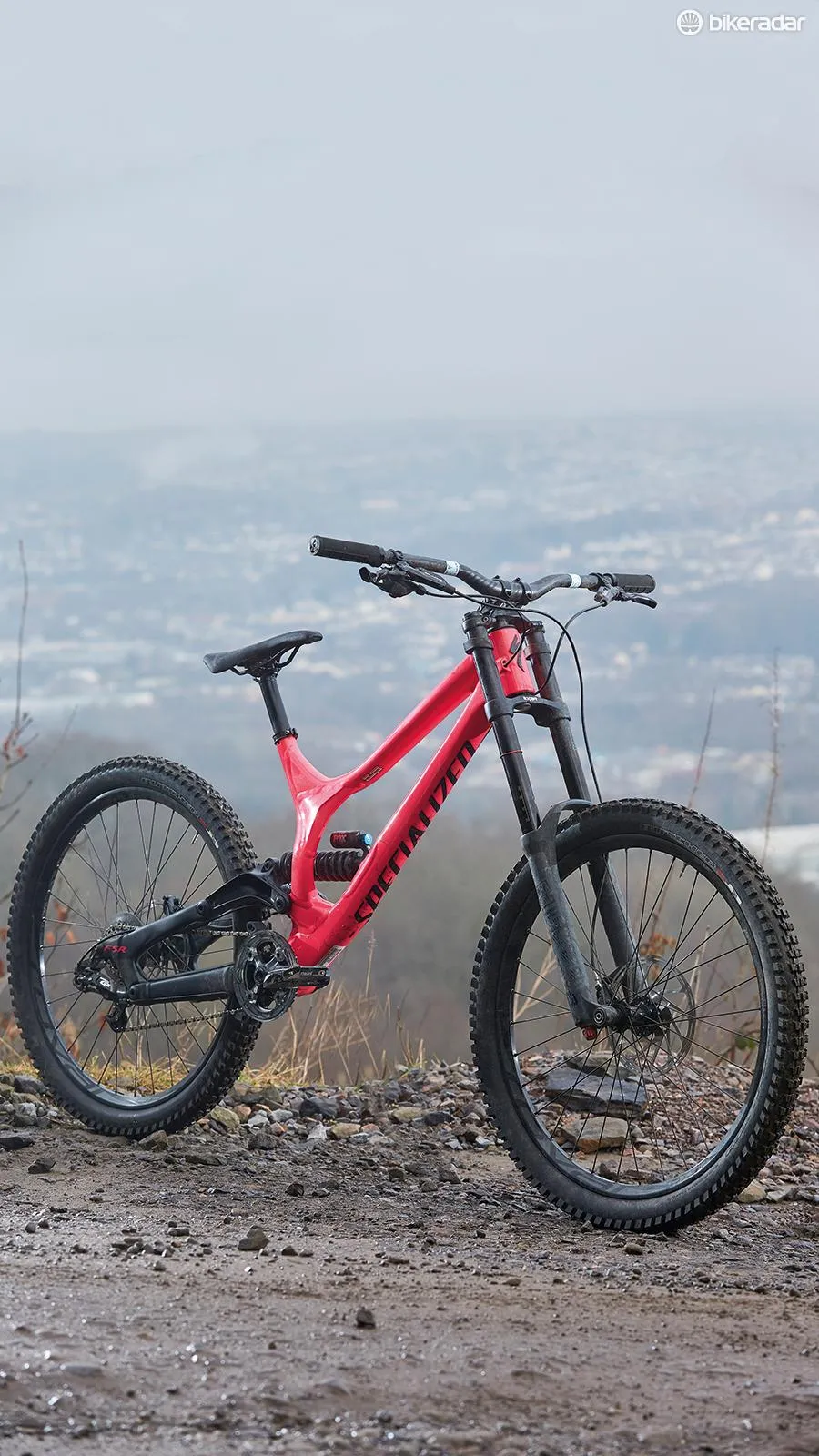The alloy version of the bike piloted to DH World Championships glory last year has impressed us in the past, but how does it stack up in the face of new competition?
- Best mountain bike: how to choose the right one for you
- How to get your suspension setup dialled
- Nukeproof Pulse Comp review
Specialized’s striking asymmetric frame design makes it easier to remove the shock for servicing or to swap springs, but mostly it just looks cool. The unique thing here is the suspension.
While the Demo uses Specialized’s proven ‘FSR’ Horst link rear end, it differs from its other bikes because the main pivot is concentric with (and houses) the bottom bracket. This means the frame’s centre of mass is lower and the chain’s effect on the suspension is reduced.
The theory is that this gives a more supple action, but at the expense of pedalling efficiency. At least you get decent heel clearance thanks to the 12x135mm (rather than the usual 12x157mm) rear hub spacing.
Specialized Demo 8 I Alloy kit
The Fox Van RC coil shock offers compression and rebound adjustment, and the BoXXer Team fork gets the superior Charger damper.
Specialized’s Butcher tyres are surefooted, if slow. Instead of of seven-speed SRAM GX DH gearing, the Demo gets a 10-speed cassette (and chain) with three sprockets removed. This set-up is a little noisy, but shifts just fine. The only spec disappointment is the underpowered SRAM Guide R brakes.
Specialized Demo 8 I Alloy ride impressions

In the car park, the long-stroke shock and 500lb/in spring make the Demo’s suspension feel firmest, but out on the trail it’s supple and forgiving. This allows you to ride roughshod through high-speed boulder fields with less pedal interaction being transmitted through the chain, which is a huge benefit for flat-pedal riders. Lean the bike over and it grips well too.
When things get steep and hairy, the low bottom bracket helps things feel planted and secure, although the relatively short (430mm) chainstays mean it’s still easy to pick up the back end and change line in the tightest, steepest terrain.
It’s not all roses, though. The downside of that low bottom bracket is that you’ll often find your feet dragging on the insides of ruts, and pedalling through rocky terrain requires careful timing. When you do get the power down, the Demo slouches into its travel and feels lazy to get moving.
Its suspension is easy to bottom out, too, because there isn’t much progression built into the linkage. When landing hard, I felt it reach the bump stops a little too easily. Also, while the Specialized has superb off-camber traction, it slouches back a little when pushed hard into berms.
The short back end (430mm) and long front centre mean the bike’s weight balance is naturally rearward, especially in this XL size. Add the wallowy rear suspension and this can cause the front wheel to go light and lose grip at times.

To check it wasn’t the tyres that were to blame, I swapped wheels with the Nukeproof Pulse Comp that was also on test. This only made matters worse, as the High Roller IIs had less cornering grip than the stock Butchers. To get round the problem, I added more compression damping to the shock and reduced the fork damping, while adopting a more forwards stance in the turns.
I could have fitted an even firmer spring and/or added even more compression to the shock, but this would have compromised the off-the-top sensitivity that I love.
The Demo offers a superbly planted, stable and engaging ride. If I was being picky, I think the chainstays are a tad short for this XL size and the suspension is a little linear for those who like to push really hard into turns and jumps. But if you want to float down the roughest, steepest, most technical tracks around, this is the bike for you.

